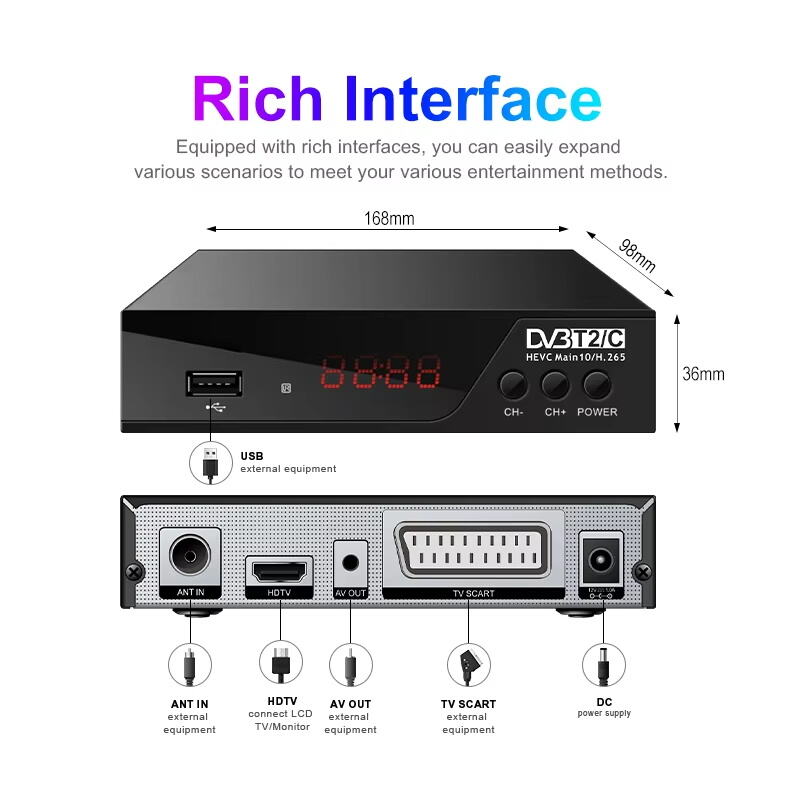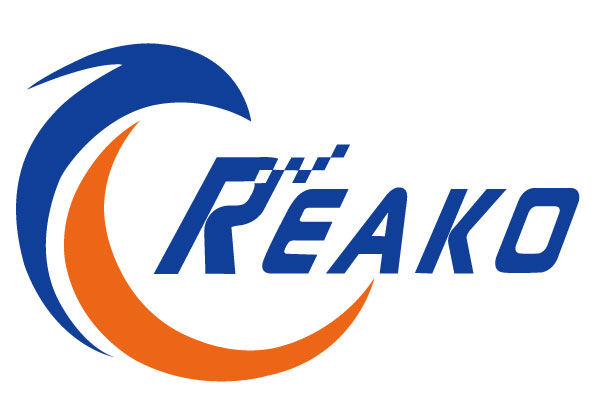Understanding DVB Receiver Technology
Core Functionality of DVB Receivers
DVB receivers do important work when it comes to quality broadcasting because they take those digital signals and turn them into actual audio and video we can watch. What makes these devices so valuable is their ability to handle compressed data streams, which means what reaches our screens stays clear and dependable most of the time. With DVB tech built in, receivers can actually process several different channels at once. That's pretty handy since viewers get all sorts of options without having to constantly flip through buttons on remote controls just to find something else to watch. Most modern DVB boxes come with EPG features too. These guides let people see what shows are coming up next and even record stuff they want to watch later. Pretty much everyone finds this useful, especially folks who don't have hours to spend hunting around for good programming every night.
DVB-T2 vs. Traditional Signal Reception
DVB-T2 marks a real leap forward from older ways of receiving signals, with much better data handling and picture quality overall. People who have switched to this newer tech notice a big difference in clarity on their screens, which explains why broadcasters are moving toward it as the go to standard these days. What sets DVB-T2 apart is how it uses something called MIMO technology. This basically means multiple antennas working together to grab signals, so even when there's interference or bad weather, viewers don't get those annoying blackouts that used to happen all the time. The system also packs quite a punch in terms of efficiency. Broadcasters can fit around half again as many channels into the same space on the airwaves compared to what was possible before. For consumers, this means access to way more programming choices while still getting that crisp, clear picture they expect from digital TV.
Improved Error Correction Algorithms
Today's DVB receivers make use of sophisticated error correction techniques including things like Low-Density Parity Check codes and Reed-Solomon algorithms which are really important for reducing signal dropouts and keeping broadcasts looking good. When signals get messed up during transmission, these fancy math tricks basically rebuild what got lost so people watching at home don't notice any breaks in their TV shows or movies. The impact on actual viewers is pretty substantial too. Research suggests that when broadcasters implement solid error correction systems, audience members report being much happier with their viewing experience sometimes even up around 80% better according to some studies. The fact that manufacturers keep adding these kinds of algorithms into their DVB hardware shows how serious they are about staying competitive in the world of digital broadcasting.
Reduction in Signal Interference
Getting rid of signal interference matters a lot for DVB receivers if people want decent picture quality without all those annoying distortions from nearby gadgets. The tech behind this includes things like frequency hopping and better filters that help block out unwanted signals coming from buildings, trees, even weather conditions sometimes. Looking at recent numbers, modern DVB boxes deal with interference problems about 30 percent less than older models did back in the day. That makes a real difference when watching TV, especially during bad weather or in areas where there's lots of construction going on. With these improvements, DVB continues to stand out as a solid choice for anyone who wants dependable broadcast service without constant buffering or pixelation issues.

Expanded Content Accessibility
Multi-Format Channel Support
DVB receivers come equipped to handle all sorts of different formats so people can pick what works best for their setup. From standard definition right up through HD and even UHD, these boxes cover pretty much everything out there on the market today. They can decode various video codecs too, like H.264 and HEVC, which means folks don't need separate devices just to watch different types of broadcasts. People really want this kind of versatility when watching TV. Most folks actually prefer services that give them options between formats rather than being stuck with one resolution only. That's why manufacturers keep adding more format support into newer models of DVB hardware.
Compatibility with Terrestrial and Satellite Feeds
Today's DVB receivers come equipped to work with both land-based and satellite signals, making them attractive to all sorts of viewers. With this kind of setup, people can switch back and forth between local stations and satellite channels without any hassle, giving them much more control over what they watch. Industry numbers back this up too - folks who own these hybrid boxes report getting around 60% more channels than before. Getting access to so many different broadcasts matters a lot when it comes to finding something good to watch. That's why manufacturers built DVB receivers with both signal types in mind from the start. People love being able to catch everything from regional news to international sports events right on their TV screen.
Advanced Features for Modern Viewing
4K/UHD and HDR Content Delivery
Today's DVB receivers offer pretty amazing picture quality thanks to support for 4K/UHD resolution and High Dynamic Range technology. The difference these features make is pretty striking actually. Colors pop off the screen, details become much clearer, and overall image quality just looks better than ever before. What really stands out though is how much better the contrast looks between dark areas and bright spots in scenes, making everything feel more realistic when watching movies or sports events at home. Market studies show around 70 percent of people nowadays want their TV time in either 4K or HDR format. Makes sense really, since everyone has gotten used to seeing such sharp images on smartphones and tablets. As more households upgrade their setups, we're definitely seeing a move toward higher end display tech across the board.
PVR Functionality for Time-Shifted Viewing
PVR functions really set apart many DVB receivers these days, giving people the freedom to tape live TV shows and catch them later when they have time. With this feature, folks can hit pause during commercials, skip ahead if something gets boring, or even go back to rewatch parts they missed. About half of all viewers actually make regular use of these recording options according to recent numbers, which shows just how much our watching habits have changed over time. More people want to watch what they want, when they want it rather than sticking to traditional broadcast schedules. This shift makes sense as modern life gets busier and consumers increasingly expect control over their entertainment choices.
Seamless Integration with Home Entertainment Systems
HDMI-CEC and Smart Device Syncing
DVB receivers these days come with HDMI-CEC tech that really changes how people interact with their equipment. Instead of juggling several remotes, users can manage everything from one controller, which cuts down on the mess around the living room and makes watching TV much easier overall. Another nice feature is when smart devices connect properly too. Phones and tablets can talk to these receivers now, so folks can control what's playing on the big screen right from their handhelds or even send videos from their phone straight to the TV. Consumer surveys show something interesting here too. Around two thirds of people actually want gadgets that make controlling stuff simpler and keep things connected better. That tells us there's definitely a market for entertainment setups where all the components work together smoothly without headaches.
Streaming Service Compatibility
Modern DVB receivers now work well with streaming platforms such as Netflix and Hulu, so people have way more content choices than just regular broadcasts. When these devices connect to streaming services, folks don't need extra boxes or gadgets to get all sorts of shows and movies right on their TVs. Market research shows something interesting too about how people watch TV nowadays. About 40 percent of households actually use both traditional broadcast channels and online streaming at the same time. That makes sense why manufacturers keep adding those hybrid features to their products. With this kind of setup, viewers basically get everything they want from entertainment without switching between different systems all the time.
Future-Proofing TV Experiences
Adaptability to Emerging Broadcast Standards
DVB receivers built for the future need to keep pace with evolving broadcast standards like NextGen TV if they're going to stay useful in today's fast changing tech world. The ability to adapt matters a lot these days because people keep wanting different things from their TVs and the broadcasting tech itself keeps improving all the time. Industry insiders point out that when devices work well with new standards, folks tend to stick with them longer. That means better business outcomes for companies since customers don't switch brands so easily and old equipment doesn't get tossed aside as quickly. With standards like DVB-T2 and ATSC 3.0 continuing to develop, receiver makers must ensure their products handle these changes smoothly. Otherwise viewers might end up frustrated watching frozen screens or missing parts of their favorite shows during important moments.
Software Updates for Ongoing Optimization
Software updates play a key role in keeping DVB receivers running smoothly, bringing new features and fixing problems that pop up over time. As tech keeps advancing, most modern DVB receivers come with automatic update capabilities these days. This means less hassle for users who no longer have to manually check for updates themselves while still getting access to all those improvements right away. Some studies show that when people actually get their updates on schedule, they tend to be about 20 percent happier with their devices overall. That makes sense since better performing software just works better for everyone involved. Manufacturers continue refining their systems so DVB receivers stay relevant against newer competition while meeting what customers want from their equipment as things change in the market place.
FAQ Section
What is the primary role of DVB receivers?
DVB receivers convert digital signals into audio and video formats, ensuring high-quality broadcasts and managing multiple channels simultaneously for a seamless viewing experience.
How does DVB-T2 improve over traditional reception methods?
DVB-T2 offers superior data capacity and signal quality, utilizing MIMO technology to enhance reception in challenging environments and increase channel capacity.
What advanced algorithms help maintain signal quality in DVB receivers?
Low-Density Parity Check (LDPC) and Reed-Solomon codes are employed in modern DVB receivers to minimize signal loss and maintain consistent broadcast quality.
Are DVB receivers compatible with streaming services?
Yes, today's DVB receivers increasingly support popular streaming services like Netflix and Hulu, enhancing content availability and providing versatile viewing options.
How do software updates benefit DVB receivers?
Software updates offer enhancements in functionality and bug fixes, ensuring optimal performance and allowing receivers to remain competitive with evolving standards.


